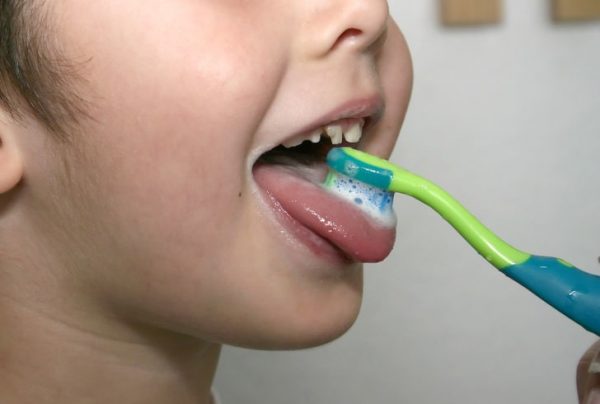Different method to close teeth gap
- Published in Cosmetic Dentistry, General Dentistry, Orthodontics, Tin tức
Does it hurt when pulpotomy treatment
- Published in General Dentistry, Tin tức
What is Enamel Hypoplasia?
Enamel Hypoplasia can be a lifelong condition that patients continue to treat or a major problem that requires fillings, crowns, and even tooth extractions. To understand the cause of enamel deficiencies and how to treat and prevent them, you need to know how your enamel works and why it doesn’t always form correctly. Keep reading to learn more about Enamel Hypoplasia and how dentists treat it.

Enamel is the hard, protective covering on the outside of your teeth. It is the hardest part of your body and works like a suit of armor protecting the soft and sensitive areas. It’s because of enamel that you’re able to eat a bowl of hot soup or enjoy ice cream in the middle of summer without your teeth experiencing pain. This protective coating also fights against physical attacks on the teeth, like biting down on hard candy and ice cubes.

Unfortunately, tooth enamel is almost 90% mineral, which dissolves in acidic environments like our mouths. When we eat highly acidic foods like fruit or candy — not to mention soda — the bacteria in our mouths turn it into lactic acid, which can wear away enamel. Once your protective layer of enamel is gone, if can’t grow back, which is why so many dentists emphasize good oral hygiene from a young age to keep the suit of armor strong.
However, kids and adults don’t always end up with the right amount of enamel on their teeth, and can suffer from Enamel Hypoplasia. This article will focus primarily on its causes, effects, and treatment.

Hypoplasia is an enamel deficiency that leaves the teeth vulnerable to damage and decay. It often takes the form of grooves, pits, or lines within teeth, either across the surface or in certain spots. Depending on the severity, Enamel Hypoplasia can look like a small dent in the tooth, or take up several teeth throughout the mouth. There can be localized discoloration, or the entire tooth can turn a dark brown color. This can make the mouth incredibly sensitive, especially for toddlers that are just learning to communicate how they feel.
While Enamel Hypoplasia can occur in both baby and adult teeth, it’s often developed before the age of three. As the baby teeth are growing, the enamel is still soft and weak, creating opportunities for damage early on. Two types of causes are attributed to Enamel Hypoplasia: hereditary and environmental.
One of the most important factors in treating Enamel Hypoplasia is catching it early. It’s better for the dentist to spot a sensitive area or fill a small cavity early on than to remove the whole tooth due to extensive decay.

Veneer as one of the methods to fix enamel hypoplasia
- Published in General Dentistry, Tin tức
Tooth decay prevention
Tooth decay is the destruction of tooth structure and can affect both the enamel (the outer coating of the tooth) and the dentin layer of the tooth.
Tooth decay occurs when foods containing carbohydrates (sugars and starches), such as breads, cereals, milk, soda, fruits, cakes, or candy are left on the teeth. Bacteria that live in the mouth digest these foods, turning them into acids. The bacteria, acid, food debris, and saliva combine to form plaque, which clings to the teeth. The acids in plaque dissolve the enamel surface of the teeth, creating holes in the teeth called cavities.
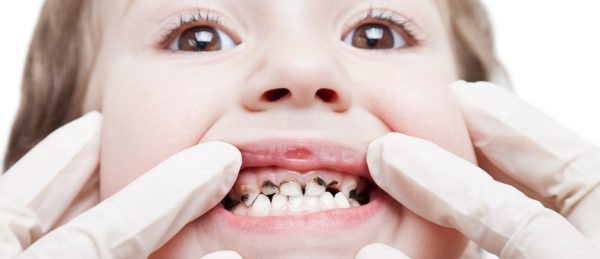
To prevent tooth decay:
- Brush your teeth at least twice a day with a fluoride-containing toothpaste. Preferably, brush after each meal and especially before going to bed.
- Clean between your teeth daily with dental floss or interdental cleaners, such as the Oral-B Interdental Brush, Reach Stim-U-Dent, or Sulcabrush.
- Rinse daily with a fluoride-containing mouthwash. Some rinses also have antiseptic ingredients to help kill bacteria that cause plaque.
- Eat nutritious and balanced meals and limit snacks. Avoid carbohydrates such as candy, pretzels and chips, which can remain on the tooth surface. If sticky foods are eaten, brush your teeth soon afterwards.
- Check with your dentist about use of supplemental fluoride, which strengthens your teeth.
- Ask your dentist about dental sealants (a plastic protective coating) applied to the chewing surfaces of your back teeth (molars) to protect them from decay.
- Drink fluoridated water. At least a pint of fluoridated water each day is needed to protect children from tooth decay.
- Visit your dentist regularly for professional cleanings and oral exam.

Researchers are developing new means to prevent tooth decay. One study found that a chewing gum that contains the sweetener xylitol temporarily retarded the growth of bacteria that cause tooth decay. In addition, several materials that slowly release fluoride over time, which will help prevent further decay, are being explored. These materials would be placed between teeth or in pits and fissures of teeth. Toothpastes and mouth rinses that can reverse and “heal” early cavities are also being studied.
- Published in General Dentistry, Tin tức
Root planing and scaling teeth
If your dental hygienist cleans your teeth every six months or so, you know that a routine professional cleaning involves scaling teeth and the gumline to remove plaque and tartar, and polishing to remove stains and smooth the tooth’s surface. This is done to keep your teeth and gums healthy. If you have symptoms of gum disease, however, you may need another type of cleaning, called scaling and root planing.
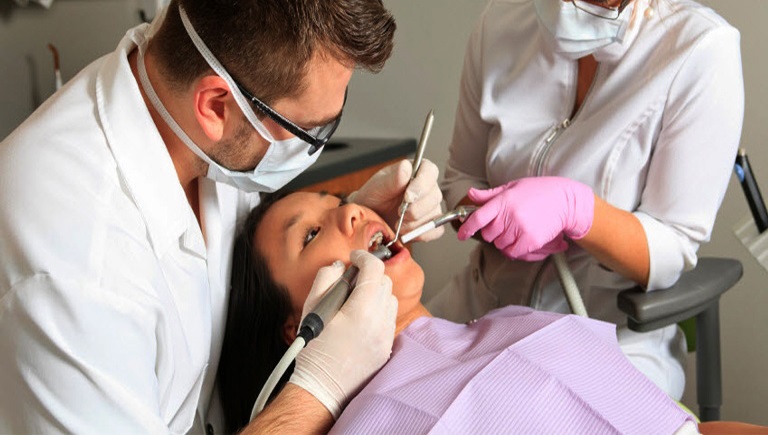
Although routine cleanings are done to prevent periodontal (gum) disease, scaling and root planing is a non-surgical procedure done to treat periodontal disease. In fact, this procedure – sometimes called a deep cleaning – is considered the “gold standard” of treatment for patients with chronic periodontitis.
Healthy gum tissue fits tightly around each tooth. But, when bacterial plaque and tartar accumulate around and under the gums, tissues that support your teeth may be affected and periodontal disease can develop causing deeper pockets to form.
When you have more advanced signs of gum disease (bad breath, heavy tartar buildup and unhealthy pocket depths of 4mm or more), your dentist may recommend scaling and root planning as the first procedure necessary to treat the condition.
Scaling and root planning teeth, provided by either your dentist or dental hygienist, may take more than one appointment to complete, and a local anesthetic is often used to minimize any discomfort.
The procedure involves thoroughly scaling all plaque, bacterial toxins and tartar deposits from your teeth and root surfaces; and then root planning, which smoothes all rough areas on your roots’ surfaces. Smooth root surfaces keep bacteria, plaque, and tartar from re-adhering underneath the gumline, allowing your gums to heal and reattach themselves more firmly.
- Published in General Dentistry
Bruxism (teeth grinding)
To evaluate the extent of bruxism, you need to check for:
– Tenderness in your jaw muscles
– Obvious dental abnormalities, such as broken or missing teeth
– Other damage to your teeth, the underlying bone and the inside of your cheeks, usually with the help of X-rays
A dental exam may detect other disorders that can cause similar jaw or ear pain, other dental problems or health conditions.
If you or your child has bruxism, the treatment might be to preserve or improve the teeth. Although these methods may prevent or correct the wear to your teeth, they may not stop the bruxism:
Splints and mouth guards. These are designed to keep teeth separated to avoid the damage caused by clenching and grinding. They can be constructed of hard acrylic or soft materials and fit over your upper or lower teeth.
Dental correction. In severe cases — when tooth wear has led to sensitivity or the inability to chew properly — your dentist may need to reshape the chewing surfaces of your teeth or use crowns to repair the damage.
Muscle relaxants. In some cases, your doctor may suggest taking a muscle relaxant before bedtime, for a short period of time.
Botox injections. Injections of Botox, a form of botulinum toxin, may help some people with severe bruxism who don’t respond to other treatments.
Medication for anxiety or stress. Your doctor may recommend short-term use of antidepressants or anti-anxiety medications to help you deal with stress or other emotional issues that may be causing your bruxism.
- Published in General Dentistry
Pulp therapy
Pulp therapy (pulpotomy or pulpectomy) is needed when the nerve of a primary (“baby”) tooth is affected by decay or infection; it is the same concept of root canal therapy for permanent teeth. In order to save the tooth, the pulp (the living tissue inside the tooth), nerves, bacteria, and any decay are removed and the resulting space is filled with special, medicated, dental materials, which restore the tooth to its full function.
Having pulp therapy done on a tooth is the treatment of choice to save a tooth that otherwise would die and have to be removed. Many patients believe that removing a tooth that has problems is the solution, but what is not realized is that extracting (pulling) a tooth may ultimately be more costly and cause significant problems with space maintenance for permanent teeth.
Pulp treatment is highly successful and usually lasts the lifetime of the baby tooth, although on occasion, a tooth will have to be extracted due to new or recurrent infections.
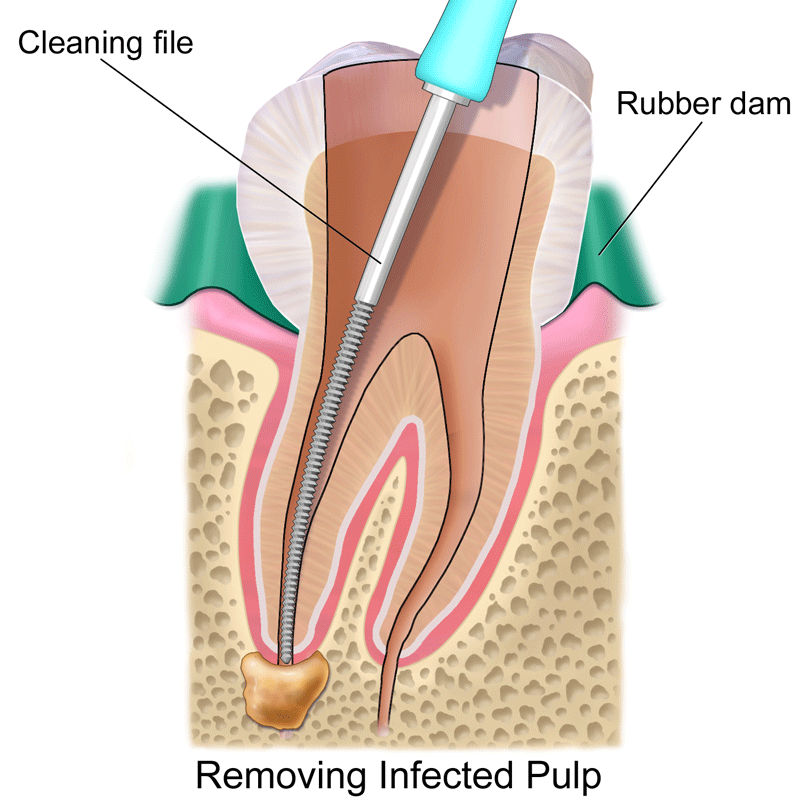
Signs and symptoms of possible pulp therapy:
- Sensitivity to hot and cold.
- Severe toothache pain.
- Sometimes no symptoms are present.
- Swelling and/or tenderness.
Reasons for pulp therapy:
- Decay has reached the tooth pulp (the living tissue inside the tooth).
- Infection or abscess have developed inside the tooth or at the root tip.
- Injury or trauma to the tooth.
What does pulp therapy involve?
A pulpotomy or pulpectomy procedure requires one or more appointments and can be performed by a dentist or endodontist (a root canal specialist).
While the tooth is numb, a rubber dam (a sheet of rubber) will be placed around the tooth to keep it dry and free of saliva. An access opening is made on top of the tooth and a series of root canal files are placed into the opening, one at a time, removing the pulp, nerve tissue, and bacteria for a pulpectomy or just the pulp tissue from the crown (the part of the tooth visible when looking in the mirror) region for a pulpotomy. Tooth decay will also be removed with special dental instruments.
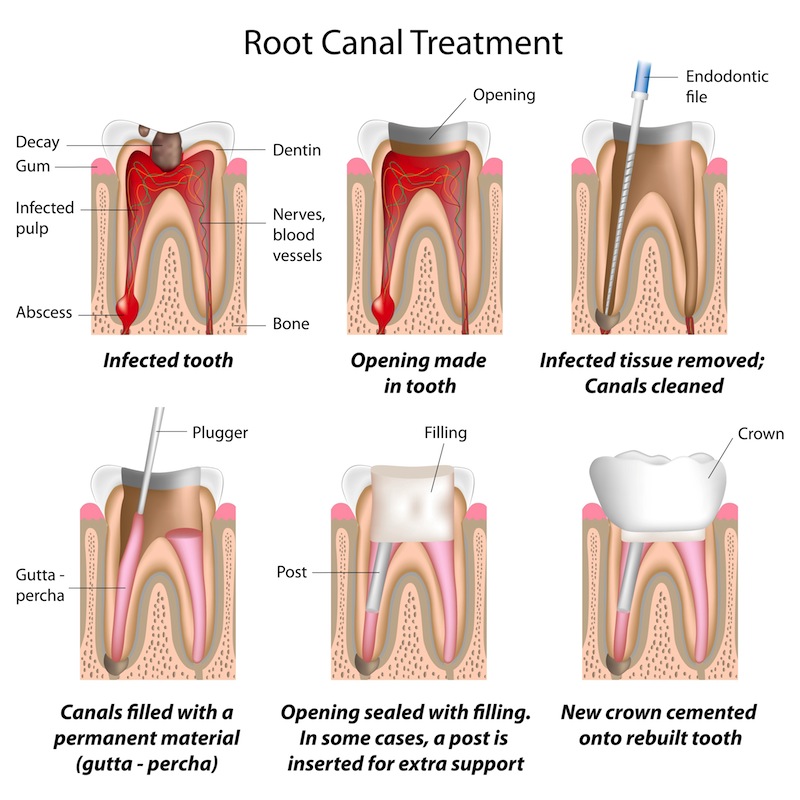
Once the tooth is thoroughly cleaned and medicated, the best way to restore or “fix” the missing tooth structure and provide the best seal from bacteria is to place a stainless steel crown. This will protect the tooth and prevent it from breaking and will restore it to its full function.
After treatment, your tooth may still be sensitive, but this will subside as the inflammation diminishes and the tooth has healed.
You will be given care instructions after each appointment. Good oral hygiene practices and regular dental visits will aid in the life of your child’s pulp treatment.
- Published in General Dentistry
Cosmetic Fillings
COSMETIC FILLINGS
Often front teeth can be repaired and improved with the addition of white composite material. The advantage being less tooth loss, less expensive and giving the tooth longevity before eventually veneering or crowning. As with most dental restorations, composite fillings are not permanent and may someday have to be replaced but they are now very durable, and will last many years, giving you a long lasting, beautiful smile.
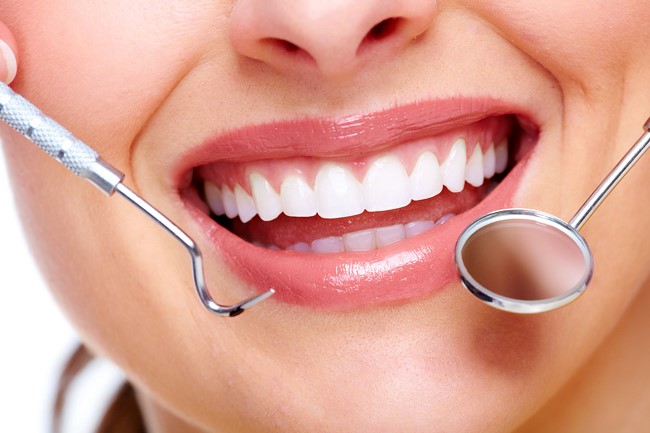
Cosmetic filling
Reasons for cosmetic fillings:
– Chipped teeth.
– Closing space between two teeth.
– Cracked or broken teeth.
– Decayed teeth.
– Worn teeth.
– Will often add longevity before crowning is needed.
How are composite fillings placed?
Composite fillings are usually placed in one appointment. While the tooth is numb, your dentist will remove decay as necessary. The space will then be thoroughly cleaned and carefully prepared before the new filling is placed. If the decay was near the nerve of the tooth, a special medication will be applied for added protection. The composite filling will then be precisely placed, shaped, and polished, restoring your tooth to its original shape and function.
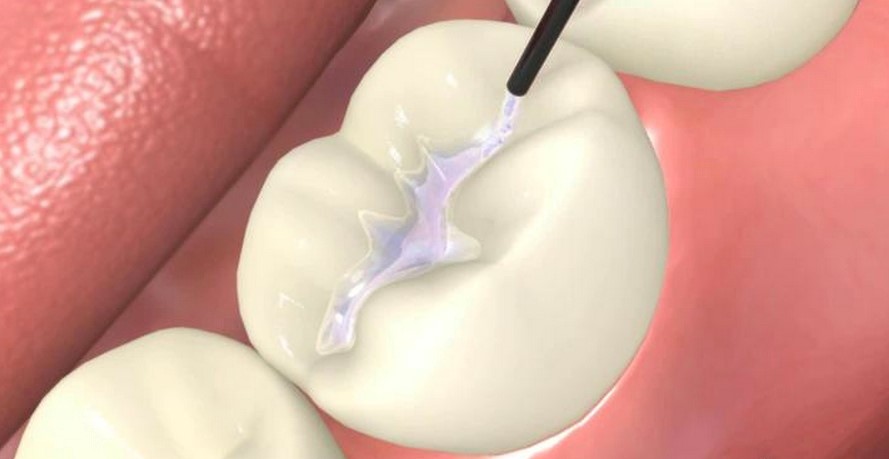
Sometimes a patient might experience sensitivity to hot and cold when composite fillings are first placed, however this persists the filling should be reviewed.
You will be given care instructions at the conclusion of your treatment. Good oral hygiene practices, eating habits, and regular dental visits will aid in the life of your new fillings.

Composite resins, or tooth-colored fillings, provide good durability and resistance to fracture in small- to mid-size fillings that need to withstand moderate pressure from the constant stress of chewing. They can be used on either front or back teeth. They are a good choice for people who prefer that their fillings look more natural.
It generally takes longer to place a composite filling than it does for a metal filling. That’s because composite fillings require the tooth be kept clean and dry while the cavity is being filled. Tooth-colored fillings are now used more often than amalgam or gold fillings, probably due to cosmetics. In a society focused on a white, bright smile, people tend to want fillings that blend with the natural color of their teeth.
- Published in General Dentistry


